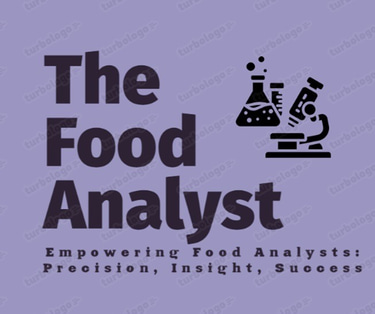"Empowering food analysts and laboratory professionals with expert insights, ISO 17025 resources, regulatory updates, industry testing requirements, training, and career opportunities for excellence in food testing."
Dose-Response Modeling for Microbial Risk in Food Safety: Principles, Applications, and Future Directions
Dose-response modeling in food safety quantifies the relationship between ingested microbial dose and the likelihood of illness. It supports risk assessment, regulatory decisions, and intervention strategies. Advances in genomics, in vitro models, and data analytics are enhancing accuracy, enabling proactive food safety management and targeted consumer protection in future systems.
3 min read
Microbial risk assessment is a cornerstone of modern food safety, aiming to understand and manage the health risks posed by pathogenic microorganisms in food. One of the most critical components of this process is dose-response modeling, which establishes the relationship between the number of microbial pathogens ingested and the probability of an adverse health outcome. This article explores the scientific principles, methodologies, and practical applications of dose-response modeling, with insights from the Food Safety Handbook and additional context to address emerging challenges in food microbiology.
What Is Dose-Response Modeling?
Dose-response modeling refers to the quantitative relationship between the dose of a microbial pathogen ingested and the likelihood of a health effect, typically infection or illness. The model provides the probability of response (e.g., illness) for various levels of exposure and is crucial for the quantitative microbial risk assessment (QMRA) process.
The model generally answers questions like:
What is the likelihood of illness if a consumer ingests 100 Salmonella cells?
How does the risk change if the dose is reduced by half?
What dose causes illness in 50% of the exposed population (ID₅₀)?
Importance of Dose-Response Modeling in Food Safety
1. Regulatory Risk Assessment
Government agencies like the FDA, USDA, EFSA, and FSSAI use dose-response models to establish microbial criteria, tolerable limits, and to prioritize regulatory actions.
2. Design of Food Safety Interventions
Industry stakeholders rely on these models to evaluate how effective specific interventions (e.g., thermal processing or sanitation) are in reducing risk.
3. Communication of Risk
Risk managers and communicators can use these models to explain the magnitude of risk to the public and make informed decisions during outbreaks.
The Four Key Components of Microbial Risk Assessment
Hazard Identification
Identifies pathogens that may be present in food and capable of causing illness.
Exposure Assessment
Estimates the number of microorganisms ingested by consumers.
Dose-Response Assessment
Quantifies the relationship between the ingested dose and the probability of illness.
Risk Characterization
Integrates all the above to estimate overall risk.
Dose-response assessment plays a pivotal role, linking exposure to the actual risk outcome.
Types of Dose-Response Models
1. Exponential Model
This model assumes that each pathogen has an equal and independent chance of causing infection. It's expressed as:
2. Beta-Poisson Model
This model accounts for variability in host susceptibility and pathogen virulence. The formula is:
The beta-Poisson model is more flexible and often used for pathogens like Salmonella, Listeria, and E. coli O157:H7.
Challenges in Dose-Response Modeling
1. Limited Human Data
Ethical restrictions prevent experimental dosing of humans with pathogens. Most data come from outbreaks, animal studies, or surrogate organisms.
2. Variability and Uncertainty
There is significant variation in host immunity, age, health status, and pathogen strains. These must be addressed via probabilistic modeling techniques such as Monte Carlo simulations.
3. Low-Dose Extrapolation
Most real-world exposures are at low doses, but most available data come from higher doses. Extrapolating accurately is technically challenging.
4. Pathogen-Specific Behavior
Some pathogens (e.g., Shigella, E. coli O157:H7) have very low infectious doses (<10 organisms), while others may need larger numbers. This necessitates custom models.
Application Examples
1. Salmonella in Poultry
Dose-response models have been developed using outbreak data and volunteer feeding trials. Risk assessments guide interventions such as pre-harvest biosecurity, post-harvest chilling, and cooking recommendations.
2. Listeria monocytogenes in Ready-to-Eat Foods
Because of its high risk to pregnant women and the elderly, dose-response modeling for Listeria considers not just illness but also severe outcomes like miscarriage and death. FDA has used such models to justify “zero tolerance” policies.
3. Norovirus in Shellfish
Norovirus modeling uses limited data but highlights high risk at low doses. Models help assess the effectiveness of depuration and cooking in risk reduction.
Integrating Dose-Response Models into QMRA
A typical QMRA scenario involves:
Estimating the contamination level in food (CFU/g).
Simulating the number of servings and serving sizes.
Applying the dose-response model to each simulated exposure.
Calculating the overall illness probability.
Modern risk assessments often incorporate Bayesian inference, machine learning, and stochastic modeling to improve accuracy and robustness.
Recent Advances and Future Directions
1. Use of Genomics
Whole-genome sequencing is improving pathogen identification and strain-level risk profiling, allowing for more precise dose-response estimations.
2. Better Surrogates and In Vitro Models
Advanced in vitro gastrointestinal models simulate human digestion and provide ethical alternatives to human trials.
3. Population-Based Modeling
Incorporating demographic and health data allows for more targeted risk predictions (e.g., risk to immunocompromised individuals).
4. Dynamic Modeling
New models account for time-temperature abuse, microbial growth kinetics, and cross-contamination to simulate “real-world” exposure scenarios dynamically.
Value Addition: Bridging Science and Policy
While the science of dose-response modeling is sophisticated, its greatest impact lies in its ability to influence policy. Consider the following insights:
Proactive Risk Management: Rather than reacting to outbreaks, dose-response modeling supports proactive interventions like targeted surveillance and resource allocation.
Customized Food Safety Plans: With digital traceability and AI tools, dose-response assessments can be integrated into HACCP and FSMS (Food Safety Management Systems) for continuous risk monitoring.
Public Risk Communication: Models can be used to develop simple visual tools (like dose-risk graphs) that help consumers understand the importance of food handling and hygiene.
© 2025. All rights reserved. All content on this website is the intellectual property of The Food Analyst. Unauthorized use or reproduction is prohibited.
Contact Us
The Food Analyst Team
We are available in multiple locations:
Bangalore | Delhi | Mumbai
Email for editorial: contact@foodanalyst.in
For advertisement: inquiryfoodanalyst@gmail.com
